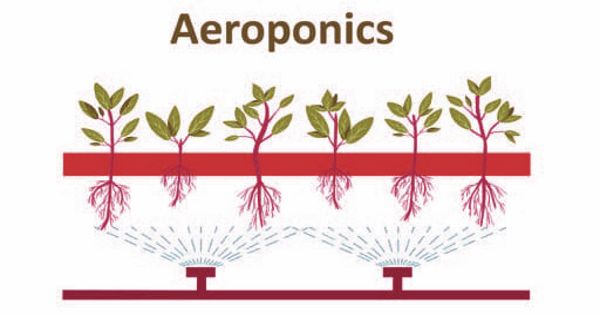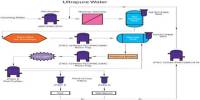Aeroponics is a growing medium that is not necessary for plants to grow provided they get the nutrients that they need. It is the process of growing plants in an air or mist environment without the use of soil or an aggregate medium. Instead of a growing medium, it uses a support platform with a flexible collar to support the plants while the roots hang below in an enclosed chamber.
The basic principle of aeroponic growing is to grow plants suspended in a closed or semi-closed environment by spraying the plant’s dangling roots and lower stem with an atomized or sprayed, nutrient-rich water solution.
Aeroponic culture differs from conventional hydroponics, aquaponics, and in-vitro (plant tissue culture) growing. The design of this cultivation system reduces the plant’s need for water and nutrients. Unlike hydroponics, which uses a liquid nutrient solution as growing medium and essential minerals to sustain plant growth, or aquaponics, which uses water and fish waste, aeroponics is conducted without a growing medium. It ensures that your plants will never have to struggle through layers of soil or an anchoring medium to get to water and nutrients.

Methods
In aeroponics systems, seeds are “planted” in pieces of foam stuffed into tiny pots, which are exposed to light on one end and nutrient mist on the other. The basic principle of aeroponic growing is to grow plants suspended in a closed or semi-closed environment by spraying the plant’s dangling roots and lower stem with an atomized or sprayed, nutrient-rich water solution. Any fertilization and nutrients that are not used are recirculated to ensure that you never waste anything in the growing solution. The leaves and crown often called the canopy, extend above. The roots of the plant are separated by the plant support structure.
Ideally, the environment is kept free from pests and disease so that the plants may grow healthier and more quickly than plants grown in a medium. Some aeroponics systems are designed to be used horizontally, like a traditional planting bed. However, since most aeroponic environments are not perfectly closed off to the outside, pests and disease may still cause a threat. Controlled environments advance plant development, health, growth, flowering, and fruiting for any given plant species and cultivars.
Pros
- Higher yields: Unlike in hydroponics, plants will not have to compete for nutrients in aeroponics, and this translates to faster growths and higher yields.
- Maximum nutrient absorption: The absence of a planting medium and the fact that the roots are suspended means that there will be maximum nutrient absorption.
- Easy plant transplantation: In the event that you have to move the plants, there will be no risk of transplant shock when using the aeroponics system.
Cons
- More sensitive system: It is a highly sensitive method of cultivation that will require a lot of attention. Everything has to be working at all times to ensure the survival of the plants.
- High initial cost: Although this system might look simple it will require significantly higher initial spending than hydroponics.
















